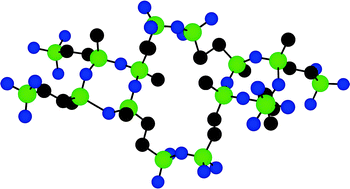A family of hybrid organic–inorganic network materials—the star gels and glasses—has been synthesized from highly functional poly(alkoxysilane) molecular precursors. The starting silanes comprise an atomic, linear or cyclic core with multiple flexible arms which terminate in network-forming trialkoxysilane groups. With typically 12 alkoxysilane groups per molecule, gelation rates in aqueous or formic acid media can be extremely high, but can be attenuated several orders of magnitude by choice of solvent system. Transparent, non-porous glasses generated from gels include large, flexible rings. Compressive stress–strain and nanoindentation tests indicate very high levels of toughness and show no evidence of any plastic deformation even under stresses which fracture fused silica. Inclusion of 5% of a star silane will substantially toughen purely inorganic glasses. The organic content of the networks can be increased by lengthening the arms; the inorganic content can be increased via co-gelation with simple tetraalkoxysilanes such as TEOS. Fluorine-bearing silanes have been used to surface-modify elastomers via
“fluoroinfusion” in which sol–gel-generated networks interpenetrate those of the rubber. Gelation chemistry, kinetics, network architecture and relaxation behavior of the star glasses are discussed in the review.

You have access to this article
 Please wait while we load your content...
Something went wrong. Try again?
Please wait while we load your content...
Something went wrong. Try again?


 Please wait while we load your content...
Please wait while we load your content...